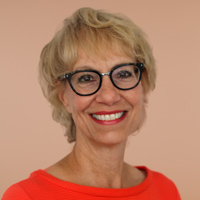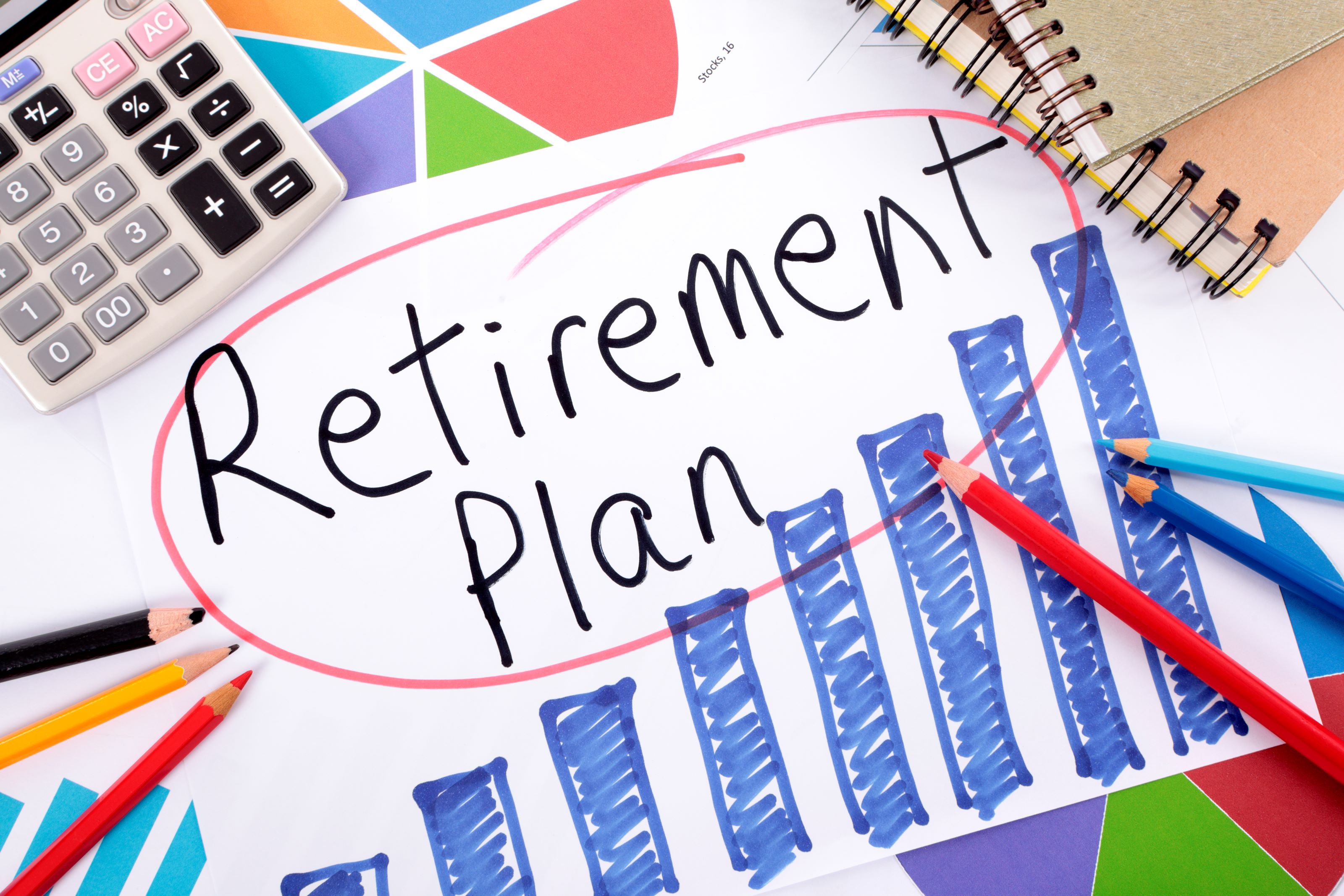FIRE Savers Race to Retirement
The Financial Independence, Retire Early (FIRE) movement is catching on with a new generation that is redefining what it means to be retired.

Shortly after Matt Owen graduated from college, he consulted with his parents’ financial planner, who told him he would be lucky to retire at age 50. Matt, now 29, and his wife, Alli, 28, had other plans.
Starting four years ago, the Owens slashed their living expenses. They cut back on dining out and expensive trips. They rented out the spare rooms in their Bakersfield, Calif., home, generating enough income to cover their housing expenses. Each year, they increased their savings rate until they were salting away as much as 70% of their $250,000 annual income. In April, the Owens quit their engineering jobs, hit the road in a 2006 Dodge Sprinter with 395,000 miles on it and now blog—at owenyourfuture.com—about their experiment to live on $40,000 a year.
In their blog, the Owens post their monthly expenses, which so far average just under $2,500—well below their target budget. And they haven’t completely quit working. The Owens offer financial coaching to other couples for a fee via video conferences, and in November they will launch courses to help people get their financial life in order. They also have a side hustle selling healthy baked goods online. They are still six years from reaching their financial independence number of $1.2 million. “We launched early, knowing that we were going to make more money,” Matt says.

Sign up for Kiplinger’s Free E-Newsletters
Profit and prosper with the best of expert advice on investing, taxes, retirement, personal finance and more - straight to your e-mail.
Profit and prosper with the best of expert advice - straight to your e-mail.
A hot movement
The Owens are on FIRE. That is, they are part of the Financial Independence, Retire Early movement that has taken off in recent years, mostly among millennials. The goal is to reach financial independence by socking away 50% or more of annual income over, say, 10 to 15 years. Some race to achieve FI much earlier. FI is usually defined as achieving savings equal to 25 times annual living expenses—which allows you to follow the 4% withdrawal rule for the duration of a decades-long retirement.
The “retire early” part of FIRE often raises eyebrows—and skepticism. Like the Owens, many “FIRE walkers” are refugees from high-paid professional or tech careers, and most have no plans to completely stop working. But FIRE acolytes say they’re redefining retirement. “Retire early” for many of them means having the financial freedom to leave the “hamster wheel” for work or pursuits that give them more control over their time.
“I define retirement as never planning to go back to a 9-to-5 job,” Alli says. “We plan to work for another 30 years, but on our own terms, creating work that provides value to the world and aligns with our values.”
Many FIRE practitioners have an entrepreneurial streak that makes them well suited for a life outside the traditional, corporate mold. One popular source of income is blogging about their path to financial independence. The more-successful bloggers pull in a nice paycheck and may even snag book deals. Perhaps the best-known FIRE blog—and the one that introduced thousands to the movement—is the one by Pete Adeney, also known as Mr. Money Mustache. Adeney, a former software engineer, started the blog in 2011 after he “retired” at age 30, through frugal living and smart investing, to Longmont, Colo. He and his family live on about $34,000 a year. (See A Visit With Mr. Money Mustache.)
Different flavors
FIRE isn’t one size fits all. There is “lean FIRE,” which emphasizes a goal of living on less than $40,000 a year in retirement. “Barista FIREs” are those who are nearly financially independent but still need a part-time job to make ends meet. And “fat FIRE” followers aim to accrue enough savings to generate annual retirement income of $100,000 or more.
Leif Dahleen, a 42-year-old anesthesiologist from Brainerd, Minn., counts himself among the last group, and he has been edging toward retirement. Naturally frugal, Dahleen says he started his Physician on FIRE blog a couple of years ago because he didn’t see much written for high-income professionals like him. (This year the blog will earn six figures, half of which Dahleen donates to charity.) He cut his hours and his $400,000 salary by about 40% a year ago. He expects to quit work next year and spend several years traveling the world with his wife and two sons, ages 8 and 10.
“There are certain things I will miss about the profession,” he says. “But in general I don’t think I will miss the stress, the late nights, the calls, the 72-hour shifts once a month.” The Dahleens plan to “roadschool” their children (that is, homeschool them while on the road).

John and Bethany Bush of Rockford, Mich., are part of the lean FIRE crowd. John, 28, is a financial adviser and Bethany, 26, processes public-assistance paperwork for the state of Michigan. Their combined income is $85,000, but the couple and their two children live on $3,800 a month, with a big chunk of that going toward a mortgage that will be paid off in five years. John figures they will be financially independent in seven years.
“We know every penny we spend and monitor it closely,” says John, adding that he and Bethany are thrifty by nature. “Some of the clothes I wear at home are from middle school,” he says. The couple buy food on sale, get hand-me-down clothes for the kids, and find free toys and other items on Craigslist and Facebook. They wait to make nonessential repairs on the house, and they weigh each purchase decision longer than most people do, John says. They have started a 529 college-savings plan for each child and expect that, along with financial aid, they’ll be able to cover college bills.
Bethany says her family makes fun of their “cheapness,” but some members are now on board. Within their first year of marriage, the Bushes wiped out about $18,000 in car and student loans. When one of Bethany’s sisters heard that, she, too, eliminated her student debt, and then another sister paid off her debt. “It’s a trickle-down effect,” Bethany says.
Unfortunately, many workers don’t earn enough to save 50% or 70% of their income, says Michael Kitces, director of wealth management for Pinnacle Advisory Group in Columbia, Md. The median U.S. household income is only about $60,000. And much depends on geography. FIRE is easier if you’re earning, say, $100,000 a year in Kansas City or some other place with a low cost of living, Kitces says.
Even if you have an above-average income, you must be very disciplined and goal-oriented, says Ashley Foster, a certified financial planner in Houston. “It really is financial dieting if you’re saving 50% or more of your income,” Foster says. “For a lot of people, dieting is very difficult.”
The FIRE movement has also gained traction during a record-long bull market. It’s unclear how the inevitable bear market will affect it. Some FIRE devotees say they are prepared to cut spending further, or work to bring in extra money and avoid tapping investments in a down market.
The go-to investment for many in FIRE is low-cost index funds (Vanguard is a favorite for its offerings). FIRE investors also take advantage of tax-favored accounts—401(k)s, IRAs and health savings accounts—and sometimes buy rental properties (often a duplex or three- or four-unit building) where they can live and use rental income to pay the mortgage.
What goes around…
One of the bibles of the FIRE movement is the 1992 bestseller Your Money or Your Life, by Vicki Robin and Joe Dominguez. Robin was an advocate of a simple, sustainable lifestyle who gained financial independence in her mid twenties. Dominguez was a Wall Street stock analyst who retired at 31. For the authors, financial independence meant having enough money not to be tied to a job for its paycheck and free to pursue work or interests that reflect your values.
Perhaps no one was more surprised by the popularity of her book than Robin herself, now 73 and living in Whidbey Island, Wash. In early 2017, Robin started to work on an update of her classic to reach a new generation—only to find that an online community on Reddit was discussing the book and that it was a top seller on Amazon. “I felt like I was sort of stumbling out of the jungle and being discovered by another generation,” she says.
Robin’s new edition was published earlier this year with a foreword by Mr. Money Mustache. She rewrote the chapter on investing, adding information on index funds. When Robin was investing in the 1980s, she was able to buy 30-year U.S. Treasuries that paid from 8% to as much as 15%. That’s no longer an option for today’s FIREs, with long-term Treasuries now yielding 3%.
This time around, too, there is social media to help spread the word. Instead of feeling as if they’re the only ones being frugal, those living the FIRE life can now reach thousands of others in the movement who will share advice and offer support. For instance, the r/financial independence online community on Reddit now has 426,000 subscribers and is growing quickly. ChooseFI, a website launched in January 2017, also helps connect those in FIRE. ChooseFI has created Facebook groups for people with specific interests, such as members of the military, FIRE singles who want to meet other like-minded singles, and even people who want to swap recipes. ChooseFI also helped set up groups in 150 cities in more than 20 countries where people can meet up or trade tips with FIRE followers in their area, says cofounder Brad Barrett.
Why have millennials flocked to the movement? Robin says millennials with steep student loan debt and uncertain job prospects have concluded that they need to take control of their own future. And the internet—along with a laptop—gives workers today more employment opportunities that don’t involve a 9-to-5 job, she says.
“It’s an anti-consumer movement to an extent,” says Bush, the Michigan FIRE walker, adding that some millennials are less inclined to be loyal to a company after seeing how their parents were pink-slipped by employers during the last recession. Bush’s father, for example, was in his peak earning years at age 57 when he was laid off by the company where he had worked for more than 20 years. He found other work, but “he never made it back to where he was,” Bush says.
Trade-offs and challenges
One of the big trade-offs of workers abandoning careers early is that they will miss out on some of their peak earning years—which will also lead to a lower Social Security benefit later, says Roger Ma, a certified financial planner in New York City.
And health care is a major challenge. Most workers get health insurance through an employer that typically picks up 70% of the cost. If workers leave an employer, they need to find coverage until they are eligible for Medicare at age 65. “In the mind of early retirees, that is probably the biggest issue,” says Jonathan Mendonsa, cofounder of ChooseFI.
For some, the answer is to keep income low enough to qualify for a subsidy when they purchase insurance on the health care exchange. Some seek part-time work that comes with health benefits. Still others have medical procedures done in other countries for a fraction of the cost in the U.S., Mendonsa says.
Some FIRE followers join a Christian-based health care sharing ministry that assesses a payment lower than conventional premiums and goes toward paying members’ medical bills. The ministry’s arrangement is not insurance and generally doesn’t cover preexisting conditions, Mendonsa says. Members share religious beliefs and generally must attend church regularly, drink in moderation and abstain from smoking and illegal drugs.
Another major challenge for those who achieve FIRE: what to do for the rest of their lives. Robin says she worries that some people in the FIRE movement are too focused on the number crunching. “They are so focused on the mechanics,” she says. “They will wake up and realize there is something more to life.”
Finding the next act that gives your life purpose is a question facing all retirees—early and traditional, says J.D. Roth, founder of GetRichSlowly.org. Roth launched his site in 2006 as he worked his way out of debt and learned about personal finance. He sold the blog three years later, although he continued to write and edit for it for a time and then traveled. He repurchased the site last year.
“In my case, after I achieved financial independence and retired, I drifted for a while,” says Roth, 49. “In my talks, I joke that I sat around in my underwear playing video games all day. Even though I say that as a joke, it’s true.” The main reason he bought his site back is to gain a sense of purpose and to bring some value to the world, he says. “Financial independence shouldn’t be your goal in and of itself,” says Roth. “You have to know why you want to achieve it.”
Building a fire
To get on the road to Financial Independence, Retire Early, proponents recommend these nine steps:
1. Determine why you want to achieve FIRE, and envision what you will do once you get there. (This will keep you motivated.)
2. Calculate your net worth (total assets minus liabilities) to see where you stand.
3. Track every dollar spent so you know where your money goes.
4. Slash expenses. To reach a savings rate of 50% or more, you’ll need to cut major expenses, including housing and transportation.
5. Pay off high-cost debt, such as credit cards.
6. Build an emergency fund so you don’t resort to credit cards in a pinch.
7. Take advantage of tax-friendly accounts: 401(k)s, IRAs and a health savings account.
8. Use index funds to keep investing costs low.
9. Find a side hustle to bring in extra income and boost savings.
Profit and prosper with the best of Kiplinger's advice on investing, taxes, retirement, personal finance and much more. Delivered daily. Enter your email in the box and click Sign Me Up.

-
 Cord Cutting Could Help You Save Over $10,000 in 10 Years
Cord Cutting Could Help You Save Over $10,000 in 10 YearsHow cutting the cord can save you money and how those savings can grow over time.
-
 The '8-Year Rule of Social Security' — A Retirement Rule
The '8-Year Rule of Social Security' — A Retirement RuleThe '8-Year Rule of Social Security' holds that it's best to be like Ike — Eisenhower, that is. The five-star General knew a thing or two about good timing.
-
 457 Plan Contribution Limits for 2025
457 Plan Contribution Limits for 2025Retirement plans There are higher 457 plan contribution limits for state and local government workers in 2025. That's good news for state and local government employees.
-
 Medicare Basics: 12 Things You Need to Know
Medicare Basics: 12 Things You Need to KnowMedicare There's Medicare Part A, Part B, Part D, Medigap plans, Medicare Advantage plans and so on. We sort out the confusion about signing up for Medicare — and much more.
-
 The Seven Worst Assets to Leave Your Kids or Grandkids
The Seven Worst Assets to Leave Your Kids or Grandkidsinheritance Leaving these assets to your loved ones may be more trouble than it’s worth. Here's how to avoid adding to their grief after you're gone.
-
 SEP IRA Contribution Limits for 2025
SEP IRA Contribution Limits for 2025SEP IRA A good option for small business owners, SEP IRAs allow individual annual contributions of as much as $70,000 in 2025, up from $69,000 in 2024.
-
 Roth IRA Contribution Limits for 2025
Roth IRA Contribution Limits for 2025Roth IRAs Roth IRA contribution limits have gone up. Here's what you need to know.
-
 SIMPLE IRA Contribution Limits for 2025
SIMPLE IRA Contribution Limits for 2025simple IRA The SIMPLE IRA contribution limit increased by $500 for 2025. Workers at small businesses can contribute up to $16,500 or $20,000 if 50 or over and $21,750 if 60-63.
-
 457 Contribution Limits for 2024
457 Contribution Limits for 2024retirement plans State and local government workers can contribute more to their 457 plans in 2024 than in 2023.
-
 Roth 401(k) Contribution Limits for 2025
Roth 401(k) Contribution Limits for 2025retirement plans The Roth 401(k) contribution limit for 2025 increased, and workers who are 50 and older can save even more.